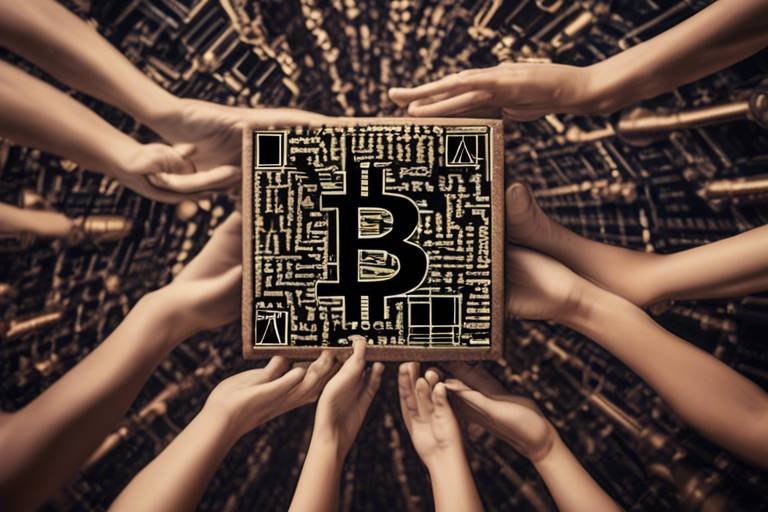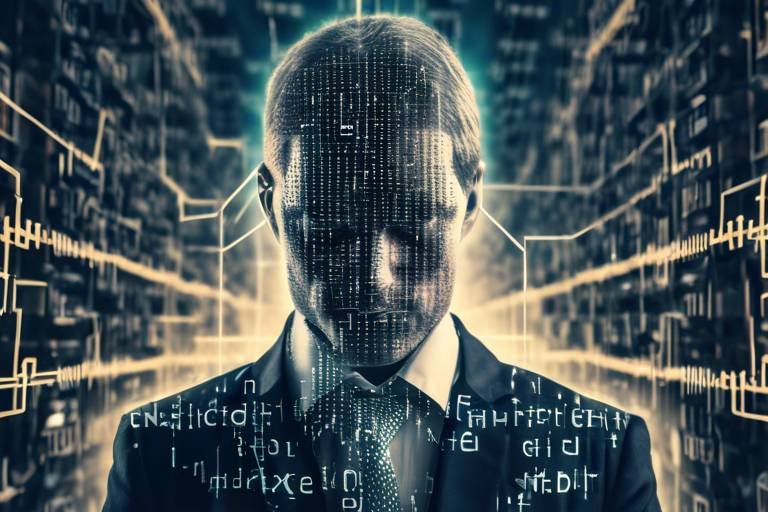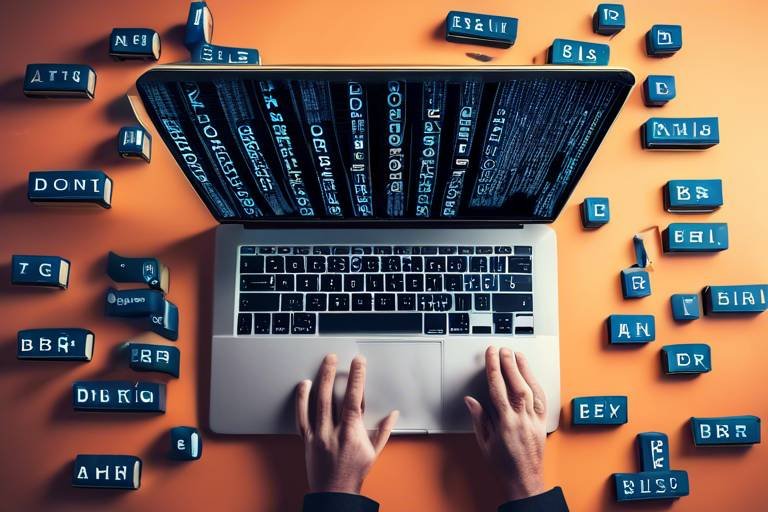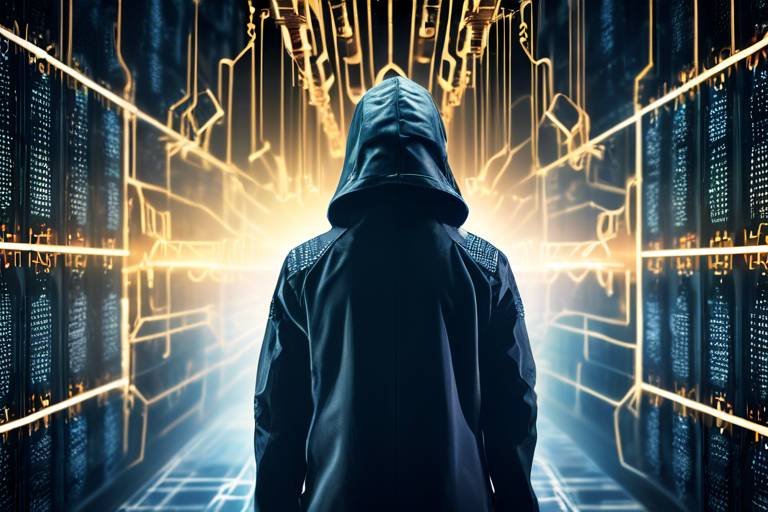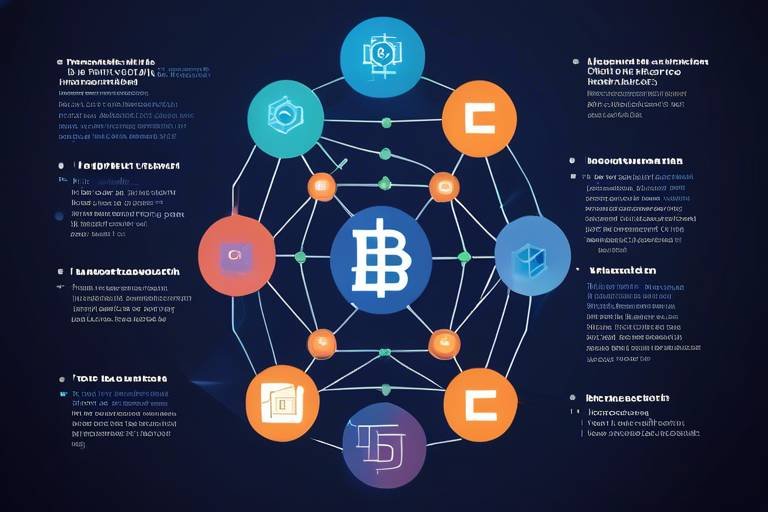The Role of Blockchain in Securing Digital Rights
In today's digital age, where information flows freely and content is created at an unprecedented rate, the concept of digital rights has become increasingly important. Digital rights refer to the legal and ethical entitlements that individuals possess over their digital content, including aspects such as privacy, ownership, and access. With the rise of the internet and digital platforms, protecting these rights has become a significant challenge. This is where blockchain technology steps in, offering a revolutionary solution to enhance the protection of digital rights.
Imagine a world where artists, writers, and creators maintain complete control over their work, where every transaction is transparent, and ownership is indisputable. This is not just a dream; it's the potential reality that blockchain technology brings to the table. By utilizing a decentralized ledger system, blockchain ensures that all transactions are recorded securely across multiple computers, eliminating the risk of unauthorized access and manipulation.
One of the most compelling features of blockchain is its decentralization. Unlike traditional systems that rely on a central authority, blockchain operates on a peer-to-peer network. This means that no single entity has control over the entire system, making it significantly more secure. With decentralization, the chances of data breaches or unauthorized alterations are drastically reduced. For digital rights, this translates to a safer environment where individuals can confidently assert their ownership without the fear of infringement.
Moreover, the immutability of blockchain records is a game-changer. Once data is recorded on the blockchain, it cannot be altered or deleted. This characteristic is crucial for maintaining the integrity of digital rights. Imagine a scenario where an artist can prove their ownership of a song with a timestamped record on the blockchain; this creates a robust defense against copyright infringement and piracy.
Another significant aspect of blockchain technology is the use of smart contracts. These self-executing contracts automate agreements between parties, ensuring that terms are met without the need for intermediaries. For instance, an artist can set up a smart contract that automatically pays them a percentage of revenue every time their song is streamed. This not only streamlines the management of digital rights but also fosters trust between creators and consumers.
However, despite the promising advantages of blockchain in securing digital rights, there are challenges to its implementation. Issues such as scalability, energy consumption, and regulatory hurdles pose significant obstacles. As blockchain technology continues to evolve, addressing these challenges will be crucial for its widespread adoption in digital rights management.
In conclusion, the role of blockchain in securing digital rights is not just about technology; it's about empowering individuals to take control of their digital content. As we move forward, the integration of blockchain solutions will likely redefine the landscape of digital rights, ensuring that creators are fairly compensated and their rights are protected. The future is bright, and with blockchain, the possibilities are endless.
- What are digital rights? Digital rights refer to the legal and ethical entitlements individuals have over their digital content, including ownership, privacy, and access.
- How does blockchain enhance digital rights? Blockchain enhances digital rights by providing a decentralized, immutable, and secure system for recording transactions, which helps protect ownership and prevent unauthorized access.
- What are smart contracts? Smart contracts are self-executing contracts with the terms of the agreement directly written into code, allowing for automatic enforcement of agreements without intermediaries.
- What challenges does blockchain face in digital rights management? Challenges include scalability, energy consumption, and regulatory hurdles that can hinder the adoption of blockchain technology in this area.

Understanding Digital Rights
In today’s digital age, is more important than ever. Digital rights refer to the legal and ethical entitlements individuals have over their digital content. This includes aspects such as privacy, ownership, and access. As we navigate the complexities of the digital landscape, it’s crucial to grasp what these rights entail. Imagine owning a physical piece of art; you would have the right to display it, sell it, or even modify it. Now, think about how that translates to digital content—whether it’s a photo, a song, or a video. The rights to these digital assets can be murky, and understanding them is like having a map in a vast, uncharted territory.
The concept of digital rights is not just about ownership; it also encompasses the right to control how your data is used. In a world where data is often harvested without consent, knowing your rights can empower you to protect your personal information. For instance, when you upload a video to a platform, do you know who really owns that content? Are you aware of how it can be shared or monetized? These questions highlight the necessity of being informed about digital rights.
Furthermore, digital rights are often tied to various legal frameworks and regulations that vary by country. Understanding these frameworks is crucial for individuals and organizations alike, as they dictate how digital content can be created, shared, and protected. For example, the General Data Protection Regulation (GDPR) in Europe provides guidelines on how personal data should be handled, giving individuals more control over their information. Similarly, copyright laws protect creators from unauthorized use of their work, ensuring they receive fair compensation.
To better understand the scope of digital rights, let’s break them down into key components:
- Privacy Rights: The right to control who has access to your personal information.
- Ownership Rights: The right to claim ownership of digital content you create.
- Access Rights: The right to access digital content without undue restrictions.
- Distribution Rights: The right to share or distribute your content as you see fit.
As we dive deeper into the implications of digital rights, it becomes clear that they are not just legal concepts but also vital components of our digital identities. The rise of blockchain technology offers promising solutions for enhancing the protection of these rights, ensuring that ownership and access are transparent and secure. In the following sections, we will explore how blockchain can help secure these rights and what challenges lie ahead.

Blockchain Fundamentals
Blockchain technology is often described as a revolutionary advancement that has the potential to reshape various industries. At its core, blockchain is a decentralized ledger system that records transactions in a secure and transparent manner. Imagine a digital notebook that is not only shared among multiple parties but also keeps a permanent record of every entry made. This is essentially what blockchain does—providing a trustworthy method for recording transactions without the need for a central authority.
The significance of blockchain in digital rights management cannot be overstated. It offers a new paradigm for how we think about ownership and control over digital content. By utilizing a network of computers (often referred to as nodes), blockchain ensures that every transaction is validated by multiple sources, making it nearly impossible to manipulate the data. This decentralized approach not only enhances security but also promotes transparency, allowing users to verify the authenticity of their digital assets with ease.
One of the fundamental principles of blockchain is immutability. Once a transaction is recorded on the blockchain, it cannot be changed or deleted. This characteristic is particularly important for digital rights, as it guarantees that ownership claims remain intact and verifiable over time. For instance, if an artist uploads their music to a blockchain platform, the record of ownership will forever remain unchanged, providing them with undeniable proof of their rights.
Another innovative aspect of blockchain technology is the concept of smart contracts. These are self-executing contracts with the terms of the agreement directly written into code. Smart contracts automate processes and enforce agreements without the need for intermediaries. Think of them as digital vending machines: you insert your payment, and the machine automatically delivers your item without any human involvement. In the context of digital rights, smart contracts can streamline the management of licenses and royalties, ensuring that artists and creators receive fair compensation for their work.
To better understand how blockchain functions, let's break down its key components:
- Decentralization: Eliminates single points of failure and enhances security.
- Transparency: All transactions are visible to network participants, fostering trust.
- Security: Cryptographic techniques ensure that data is secure and tamper-proof.
- Consensus Mechanisms: Various methods (like Proof of Work or Proof of Stake) are used to validate transactions.
In summary, blockchain technology is not just a buzzword; it is a robust framework that offers a multitude of benefits for securing digital rights. With its decentralized nature, immutable records, and the introduction of smart contracts, it is paving the way for a more transparent and equitable digital landscape. As we delve deeper into the applications of blockchain, it becomes increasingly clear that its potential is vast and largely untapped.
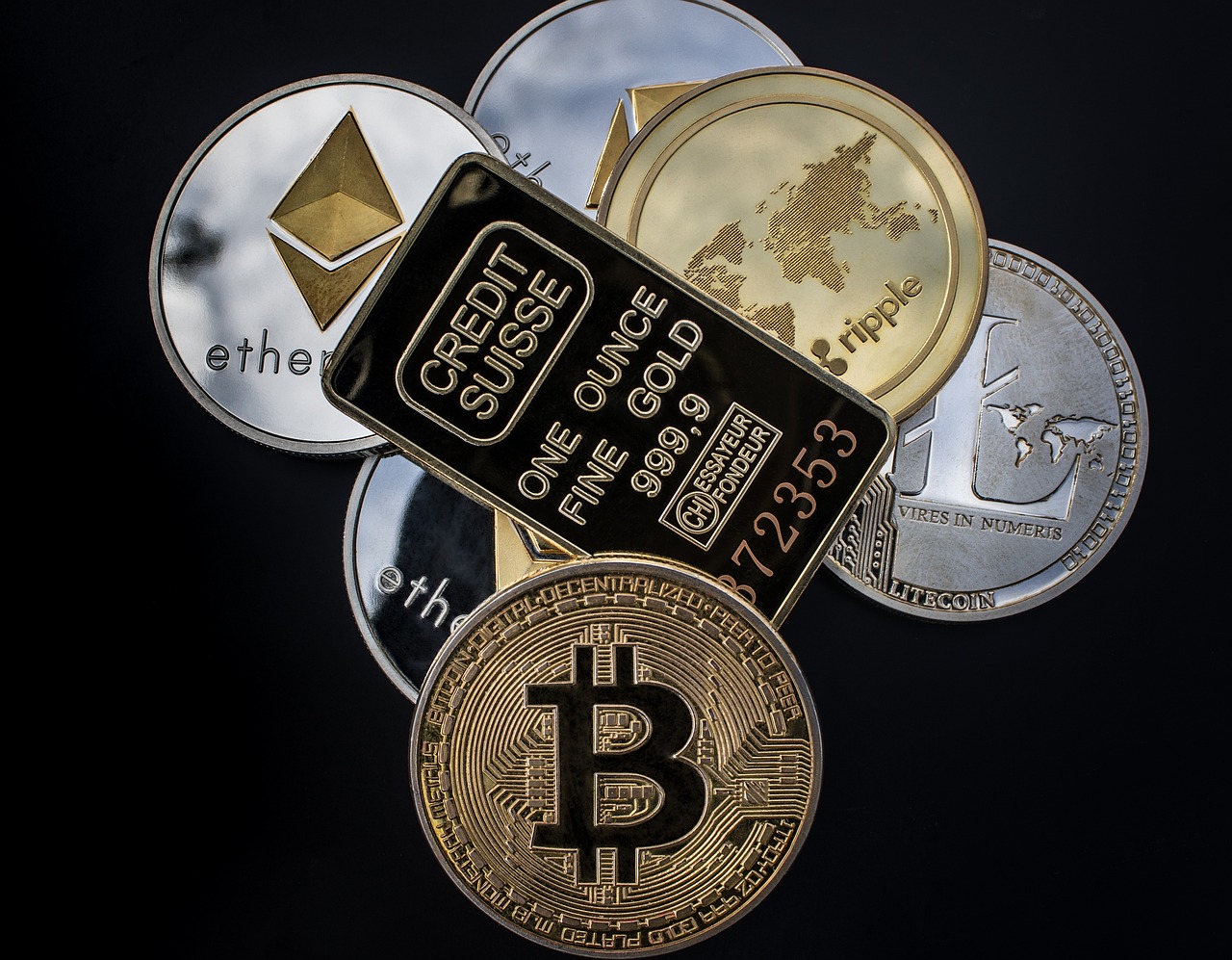
Decentralization and Security
When we talk about decentralization in the context of blockchain, we’re diving into a concept that fundamentally transforms how we think about security in the digital realm. Imagine a traditional bank where all your money is stored in one place. If that bank gets hacked or goes bankrupt, your funds are at risk. Now, picture a system where your assets are spread across numerous locations, each one working independently yet cohesively. This is the essence of blockchain technology!
Decentralization enhances security by removing the single point of failure that plagues conventional systems. In a decentralized network, data is distributed across a myriad of nodes, which means that even if one node is compromised, the others remain intact. This characteristic is crucial for protecting digital rights, as it significantly reduces the risk of unauthorized access and manipulation. Think of it like a spider web; if one strand breaks, the web still holds together, maintaining its integrity.
Moreover, the decentralized nature of blockchain allows for greater transparency. Each transaction is recorded on a public ledger that anyone can access. This transparency acts as a deterrent against fraud and misconduct, as it becomes exceedingly difficult to alter records without detection. For instance, if someone attempts to change the ownership of a digital asset, the entire network would reject this attempt if it doesn’t match the consensus already established on the blockchain.
To illustrate the impact of decentralization on security, consider the following key points:
- Enhanced Resilience: The distributed nature of blockchain means that it’s less vulnerable to attacks. Hackers would have to breach multiple nodes simultaneously to affect the network, a feat that is incredibly challenging.
- Improved Trust: With transactions visible to all participants, trust is built into the system. Users can verify transactions independently, reducing the need for intermediaries.
- Data Integrity: Since data cannot be altered retroactively without consensus, users can be confident that their rights are protected.
In summary, decentralization is a game-changer for security in the digital landscape. It not only protects against unauthorized access and fraud but also fosters a culture of trust and transparency. As we continue to explore the implications of blockchain technology, it’s clear that its decentralized nature plays a pivotal role in securing digital rights.
- What is decentralization? Decentralization refers to the distribution of authority, control, and data across multiple locations rather than being concentrated in a single entity.
- How does decentralization enhance security? By distributing data across various nodes, decentralization reduces vulnerability to attacks and fraud, making it harder for unauthorized parties to manipulate information.
- What role does transparency play in blockchain? Transparency in blockchain allows all participants to view and verify transactions, fostering trust and accountability within the network.

Immutable Records
One of the most groundbreaking features of blockchain technology is its immutability. This means that once data is recorded on the blockchain, it becomes nearly impossible to alter or delete it. Imagine a diary that, once written in, can never be erased or changed. This characteristic is crucial for maintaining the integrity of digital rights and ownership claims in an age where digital content is often manipulated or disputed.
When we talk about immutable records, we are referring to how blockchain creates a permanent and transparent ledger of transactions. Each block in the chain contains a unique cryptographic hash of the previous block, along with a timestamp and transaction data. This structure not only ensures that the records cannot be tampered with but also provides a clear historical trail that can be audited at any time. In essence, it’s like having a digital fingerprint for every piece of content, ensuring that the original creator's rights are protected.
Consider the implications of this for digital artists, musicians, and content creators. When they publish their work on a blockchain, they can be confident that their original creations are securely documented. This prevents unauthorized use and plagiarism, as the blockchain serves as a verifiable proof of ownership. Furthermore, if disputes arise over ownership, the immutable nature of the blockchain allows for quick resolution, as the original record is always accessible.
To illustrate the power of immutable records, let’s look at a few key benefits:
- Transparency: Anyone can view the history of transactions, making it easy to trace back to the original creator.
- Trust: The need for intermediaries is reduced, as the blockchain itself serves as a trusted source of truth.
- Security: Tampering with the blockchain would require an immense amount of computational power, making it nearly impossible for malicious actors to alter records.
In conclusion, the immutable nature of blockchain records not only safeguards digital rights but also fosters a culture of trust and transparency in the digital landscape. As we continue to explore the potential of blockchain technology, understanding its capabilities will be essential for artists and creators looking to protect their work and ensure fair compensation.
Q1: What does it mean for a record to be immutable?
A1: An immutable record means that once data is entered into the blockchain, it cannot be altered or deleted. This ensures the integrity and authenticity of the information.
Q2: How does immutability benefit digital rights?
A2: Immutability protects digital rights by providing a permanent and verifiable record of ownership, preventing unauthorized changes or disputes over content.
Q3: Can anyone access the records on the blockchain?
A3: Yes, blockchain records are typically transparent and can be accessed by anyone, allowing for easy verification of ownership and transaction history.
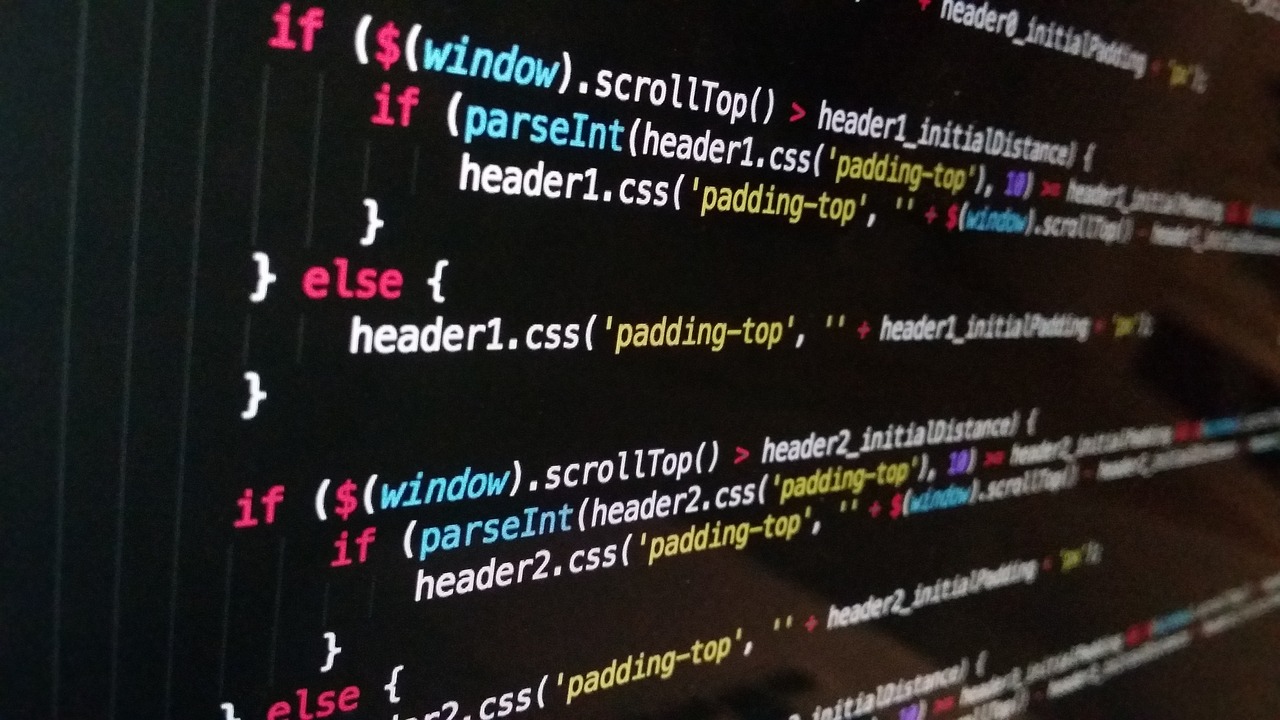
Smart Contracts
Smart contracts are one of the most exciting innovations that blockchain technology has to offer. Imagine a world where agreements are executed automatically, without the need for intermediaries or lengthy negotiations. That's the magic of smart contracts! These self-executing contracts operate on the principles of blockchain, where the terms of the agreement are written directly into lines of code. This means that once the conditions are met, the contract automatically executes, ensuring that all parties fulfill their obligations. It's like having a digital butler that never forgets a task!
What makes smart contracts particularly powerful in the realm of digital rights is their ability to enforce agreements without the risk of manipulation or fraud. For example, an artist can create a smart contract that stipulates they receive a certain percentage of sales every time their song is streamed. Once the contract is in place, it operates independently, ensuring that the artist gets paid fairly and promptly, every single time. This not only fosters trust but also enhances transparency in the entire process.
Furthermore, smart contracts can significantly reduce costs associated with traditional contract enforcement. By eliminating the need for lawyers and intermediaries, individuals and businesses can save both time and money. This is especially beneficial for creators and small businesses who often struggle with the financial burden of legal fees. In essence, smart contracts democratize access to legal agreements, making it easier for everyone to protect their digital rights.
However, it’s important to note that while smart contracts offer numerous advantages, they are not without their challenges. The code that defines a smart contract must be meticulously crafted to avoid loopholes or errors that could be exploited. Additionally, the legal recognition of smart contracts varies by jurisdiction, which can complicate their implementation. Despite these hurdles, the potential for smart contracts to revolutionize the management of digital rights is undeniable.
In summary, smart contracts are a game-changer in the digital landscape. They provide a secure, efficient, and cost-effective way to manage agreements and protect digital rights. As more industries begin to recognize their value, we can expect to see a surge in their adoption, paving the way for a more equitable digital economy.
- What are smart contracts? Smart contracts are self-executing contracts with the terms of the agreement directly written into code, allowing for automatic execution when conditions are met.
- How do smart contracts enhance digital rights? They enforce agreements automatically, ensuring fair compensation and protecting the rights of creators without the need for intermediaries.
- Are smart contracts legally binding? The legal status of smart contracts varies by jurisdiction, and it's essential to understand the local laws that apply.
- What challenges do smart contracts face? Challenges include the need for precise coding, potential legal recognition issues, and the risk of exploitation if not properly designed.

Challenges in Implementation
Implementing blockchain technology for the protection of digital rights is not without its challenges. While the potential of blockchain is immense, several hurdles must be overcome to fully realize its benefits in this domain. One of the primary challenges is scalability. As more users and transactions are added to a blockchain network, the system can become congested, leading to slower transaction times and increased costs. Imagine trying to navigate a crowded subway during rush hour; the more people there are, the harder it is to move efficiently. This is akin to what happens with blockchain networks when they are pushed beyond their limits.
Another significant issue is energy consumption. Many blockchain systems, particularly those using proof-of-work mechanisms, require enormous amounts of energy to validate transactions. This not only raises concerns about environmental sustainability but also makes blockchain less appealing to businesses that are increasingly prioritizing eco-friendly practices. The debate over energy use in blockchain is reminiscent of the discussions around other energy-intensive technologies; as society becomes more environmentally conscious, solutions must evolve to minimize their carbon footprints.
Moreover, there are regulatory hurdles that can complicate the implementation of blockchain for digital rights. Governments worldwide are still grappling with how to regulate this new technology. The lack of clear legal frameworks can create uncertainty for businesses looking to adopt blockchain solutions. It’s like trying to play a game without knowing the rules; without clear guidelines, participants may hesitate to engage fully. This uncertainty can stifle innovation and slow down the adoption of blockchain technology in securing digital rights.
In addition to these challenges, there are also concerns regarding user education and awareness. Many individuals and organizations are still unfamiliar with how blockchain works and its potential applications in digital rights management. This knowledge gap can lead to skepticism and resistance to adopting new technologies. To bridge this gap, comprehensive education and outreach efforts are necessary, akin to teaching someone to ride a bike for the first time—initially daunting but ultimately empowering once mastered.
Despite these challenges, the conversation around blockchain's role in securing digital rights continues to evolve. Stakeholders across various industries are actively working to address these issues, developing solutions that can enhance scalability, reduce energy consumption, and navigate regulatory landscapes. The road may be bumpy, but the destination—an efficient, secure, and transparent system for managing digital rights—is worth the journey.
- What is blockchain technology? Blockchain is a decentralized digital ledger that records transactions across many computers securely, ensuring that the data cannot be altered retroactively.
- How does blockchain enhance digital rights? Blockchain enhances digital rights through transparency, security, and the ability to prove ownership without relying on a central authority.
- What are smart contracts? Smart contracts are self-executing contracts with the terms of the agreement directly written into code, allowing for automatic execution when conditions are met.
- What are the main challenges in implementing blockchain for digital rights? The main challenges include scalability, energy consumption, regulatory hurdles, and user education.

Case Studies of Blockchain in Digital Rights
In recent years, the application of blockchain technology in the realm of digital rights has shown promising results across various industries. These case studies illustrate how blockchain not only enhances security but also empowers creators and consumers alike. From music to intellectual property, the transformative power of blockchain is making waves. Let’s dive into some compelling examples that highlight its effectiveness in securing digital rights.
One of the most notable case studies comes from the music industry. Artists have long struggled with fair compensation, often finding themselves at the mercy of record labels and streaming platforms. However, with the advent of blockchain, musicians can now maintain control over their work. For instance, platforms like Myco and Ujo Music are utilizing blockchain to allow artists to distribute their music directly to fans. This not only ensures that artists receive a higher percentage of the revenue but also enables them to set their own terms for usage and distribution. The transparency of blockchain allows fans to see exactly how their contributions are supporting their favorite artists, creating a more direct and meaningful relationship.
Another fascinating example lies in the field of intellectual property protection. Traditional methods of proving ownership can be cumbersome and prone to disputes. However, blockchain provides a solution by offering a decentralized and immutable ledger where creators can register their works. Companies like Ascribe and Everledger are leading the charge in this area, allowing artists, writers, and inventors to establish verifiable proof of ownership. This not only protects their creations from unauthorized use but also simplifies the process of licensing and selling intellectual property. With blockchain, the ownership history of a digital asset can be traced back to its origin, which is a game-changer for creators seeking to safeguard their rights.
To further illustrate the impact of blockchain in securing digital rights, here’s a quick comparison of traditional methods versus blockchain-based solutions:
| Aspect | Traditional Method | Blockchain Method |
|---|---|---|
| Ownership Proof | Paper-based documentation | Immutable digital records |
| Compensation | Middlemen take a large cut | Direct payment to creators |
| Transparency | Limited visibility | Full transparency for all transactions |
These case studies not only demonstrate the practical applications of blockchain technology but also highlight its potential to reshape the landscape of digital rights. As we continue to explore innovative solutions for securing ownership and ensuring fair compensation, it becomes increasingly clear that blockchain is at the forefront of this transformation.
- What is blockchain technology? Blockchain is a decentralized ledger that securely records transactions across multiple computers, ensuring transparency and security.
- How does blockchain enhance digital rights? It provides immutable records, direct compensation to creators, and eliminates the need for intermediaries.
- Can blockchain be used in other industries? Yes, blockchain has applications across various sectors including finance, healthcare, and supply chain management.
- What are the challenges of implementing blockchain? Challenges include scalability, energy consumption, and navigating regulatory frameworks.
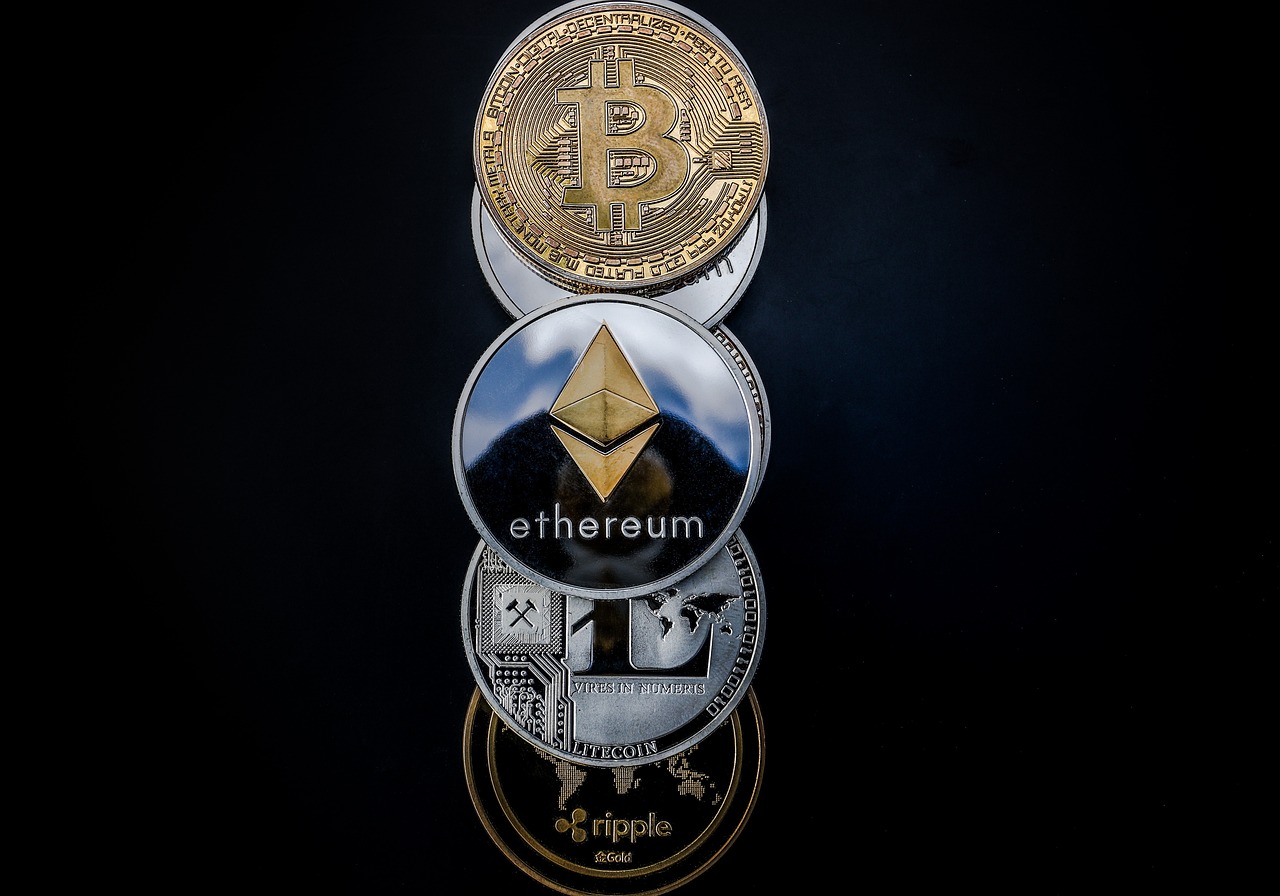
Music Industry Innovations
The music industry has undergone a remarkable transformation in recent years, largely due to the advent of blockchain technology. This innovative approach not only empowers artists but also reshapes the entire landscape of how music is created, distributed, and monetized. Imagine a world where musicians no longer have to rely on traditional record labels to gain recognition and earn a living. With blockchain, this dream is becoming a reality!
One of the most significant innovations is the ability for artists to maintain control over their work. Traditionally, record labels and intermediaries often took a substantial cut of an artist's earnings, leaving them with minimal compensation for their hard work. However, blockchain facilitates a direct connection between artists and their audience, enabling musicians to receive fair compensation for their creations. Through platforms that utilize blockchain, artists can sell their music directly to fans, eliminating the middleman and ensuring that they receive a greater share of the profits.
Furthermore, the implementation of smart contracts on blockchain platforms has revolutionized how agreements are made and enforced in the music industry. These self-executing contracts automatically execute terms when specific conditions are met, ensuring that artists are paid promptly for their work. For example, when a song is streamed, a smart contract can automatically distribute royalties to the artist and all involved parties, such as producers and collaborators, without the need for manual intervention. This not only streamlines the payment process but also enhances transparency, as all transactions are recorded on the blockchain, making it easy to track earnings.
Moreover, blockchain technology offers a solution to the pervasive problem of copyright infringement in the music industry. By providing a verifiable proof of ownership, artists can establish their rights over their creations securely. This means that if someone uses their music without permission, the artist can easily prove ownership and take appropriate action. The ability to register music on a blockchain creates a permanent, tamper-proof record that can be referenced in disputes, providing artists with the legal backing they need to protect their work.
Some notable projects have emerged, showcasing the effectiveness of blockchain in the music industry. For instance, platforms like Myco and Ujo Music are leading the charge by allowing artists to publish their music on the blockchain, ensuring they receive fair compensation and maintain ownership of their intellectual property. These platforms empower artists to set their own prices and terms, fostering a more equitable music ecosystem.
In summary, blockchain technology is not just a buzzword; it is a game-changer for the music industry. By enabling artists to take control of their work, ensuring fair compensation through smart contracts, and providing a secure method for proving ownership, blockchain is paving the way for a more sustainable and artist-friendly future. The innovations brought about by this technology are not only exciting but also essential for the evolution of the music industry as we know it.
- What is blockchain technology?
Blockchain is a decentralized ledger system that records transactions across multiple computers securely and transparently. - How does blockchain benefit musicians?
Blockchain allows musicians to sell their music directly to fans, ensuring they receive fair compensation, and provides a secure way to prove ownership of their work. - What are smart contracts?
Smart contracts are self-executing contracts with the terms of the agreement directly written into code, allowing for automatic execution of payments and agreements. - Can blockchain help with copyright issues?
Yes, blockchain provides verifiable proof of ownership, helping artists protect their work from unauthorized use and infringement.

Intellectual Property Protection
In today's fast-paced digital world, protecting intellectual property (IP) has become increasingly vital, as creators and innovators strive to safeguard their unique ideas and creations from unauthorized use. Traditional methods of IP protection often fall short, leaving many vulnerable to infringement. This is where blockchain technology steps in, offering a revolutionary approach to securing intellectual property rights. By providing a transparent, immutable record of ownership, blockchain ensures that creators can prove their rights with confidence.
Imagine a world where every piece of digital art, music track, or written work is registered on a blockchain. This means that the original creator has verifiable proof of ownership that cannot be disputed. The transparency of blockchain allows anyone to check the ownership history of a digital asset, making it much harder for infringers to claim someone else's work as their own. This level of security is a game-changer for artists, musicians, and writers alike.
One of the most significant advantages of using blockchain for IP protection is the concept of smart contracts. These self-executing contracts automatically enforce the terms of an agreement when certain conditions are met. For example, an artist could set up a smart contract that automatically pays them a percentage of revenue every time their song is streamed. This not only ensures fair compensation but also eliminates the need for intermediaries, streamlining the entire process.
However, while blockchain offers immense potential for protecting intellectual property, there are still challenges to overcome. The technology is still relatively new, and many creators may not fully understand how to utilize it effectively. Additionally, there are concerns about the scalability of blockchain solutions and whether they can handle the vast amount of data generated by digital content. Nevertheless, organizations are beginning to explore innovative ways to integrate blockchain into their IP protection strategies.
To illustrate the practical applications of blockchain in IP protection, consider the following table showcasing various projects that have successfully harnessed this technology:
| Project Name | Description | Industry |
|---|---|---|
| Myco | A platform for musicians to register their work on the blockchain, ensuring they receive royalties directly. | Music |
| Ascribe | Enables artists to claim ownership of their digital art and sell it with proof of authenticity. | Art |
| Everledger | Uses blockchain to track the provenance of diamonds and other luxury goods, protecting against fraud. | Luxury Goods |
As we look to the future, the integration of blockchain technology into intellectual property protection will likely continue to grow. The potential for increased security, transparency, and efficiency makes it an attractive solution for creators across various industries. By embracing blockchain, artists and innovators can reclaim control over their works, ensuring that their rights are respected and their contributions to the digital landscape are protected.
- What is intellectual property? Intellectual property refers to creations of the mind, such as inventions, literary and artistic works, symbols, names, and images used in commerce.
- How does blockchain help with intellectual property protection? Blockchain provides a secure and transparent way to register and verify ownership of intellectual property, making it difficult for others to claim or use someone else's work without permission.
- What are smart contracts? Smart contracts are self-executing contracts with the terms of the agreement directly written into code, which automatically enforce the contract when conditions are met.
- Are there any challenges in using blockchain for IP protection? Yes, challenges include a lack of understanding of the technology, scalability issues, and the need for widespread adoption among creators.

The Future of Digital Rights and Blockchain
The future of digital rights is a thrilling frontier, one that is increasingly intertwined with the revolutionary potential of blockchain technology. As we continue to navigate the digital landscape, the demand for more robust mechanisms to protect individual rights is growing. The integration of blockchain promises to reshape how we think about ownership, access, and privacy in the digital realm. Imagine a world where every digital asset, from music to art, is securely owned and easily transferable without the risk of fraud or unauthorized use. This scenario is not just a dream; it’s on the horizon.
One of the most exciting prospects of blockchain in securing digital rights is its ability to provide transparency. With blockchain, every transaction is recorded on a public ledger that anyone can access. This level of transparency can help to build trust among users, as it allows for verification of ownership and the history of digital assets without the need for intermediaries. For instance, artists can track the use of their work in real-time, ensuring they receive fair compensation for every use.
Moreover, the future may see the rise of decentralized platforms that empower creators and consumers alike. By eliminating middlemen, artists can connect directly with their audience, retaining a larger share of profits. This shift could lead to a more equitable distribution of wealth in creative industries. Additionally, as smart contracts become more sophisticated, they will automate royalty payments and licensing agreements, ensuring that creators are paid promptly and fairly.
However, it's essential to acknowledge the challenges that lie ahead. While blockchain offers numerous benefits, issues such as scalability and energy consumption present significant hurdles. For blockchain to be widely adopted in protecting digital rights, solutions must be developed to address these challenges. As technology evolves, we can expect innovative approaches to emerge, potentially leading to more sustainable and efficient blockchain systems.
Furthermore, regulatory frameworks will play a crucial role in shaping the future of digital rights and blockchain. Governments and organizations will need to collaborate to establish guidelines that protect users while fostering innovation. This balance is vital for creating an environment where blockchain can thrive and be trusted as a means of securing digital rights.
In conclusion, the marriage of blockchain technology and digital rights is poised to revolutionize the landscape of ownership and access in the digital world. As we look ahead, we can anticipate a future where digital rights are not only protected but also celebrated, thanks to the transparency and security that blockchain offers. The journey is just beginning, and the possibilities are limitless.
- What is blockchain technology?
Blockchain is a decentralized digital ledger that records transactions across many computers, ensuring that the recorded information cannot be altered retroactively.
- How does blockchain enhance digital rights protection?
Blockchain enhances digital rights protection through its transparency, security, and immutability, allowing users to verify ownership and track the use of digital assets.
- What are smart contracts?
Smart contracts are self-executing contracts with the terms of the agreement directly written into code, allowing for automated and trustless transactions.
- What challenges does blockchain face in digital rights management?
Challenges include scalability, energy consumption, and the need for clear regulatory frameworks to ensure safe and effective implementation.
Frequently Asked Questions
- What are digital rights?
Digital rights refer to the legal and ethical entitlements individuals have over their digital content. This includes aspects such as privacy, ownership, and access to information. Understanding these rights is essential in today's digital landscape, where content can easily be copied, shared, or manipulated.
- How does blockchain enhance the security of digital rights?
Blockchain enhances the security of digital rights through its decentralized nature, which eliminates single points of failure. This means that no single entity controls the data, making it harder for unauthorized access or manipulation to occur. Additionally, blockchain's immutable records ensure that once information is recorded, it cannot be altered or deleted, preserving the integrity of ownership claims.
- What are smart contracts and how do they relate to digital rights?
Smart contracts are self-executing contracts with the terms of the agreement directly written into code. They automate and enforce agreements on the blockchain, allowing for trust and transparency between parties. In the context of digital rights, smart contracts can streamline the management of rights and transactions, ensuring that creators receive fair compensation for their work.
- What challenges does blockchain face in securing digital rights?
While blockchain holds great promise for securing digital rights, it faces several challenges, including scalability issues, high energy consumption, and regulatory hurdles. These factors can hinder widespread adoption and implementation, making it crucial to address these challenges for blockchain to reach its full potential in protecting digital rights.
- Can you provide examples of blockchain applications in the music industry?
Yes! The music industry has seen notable advancements through blockchain technology, allowing artists to maintain control over their work and receive fair compensation. Projects like Audius and Ujo Music are examples where blockchain is used to create transparent royalty distribution systems, helping artists connect directly with their fans and monetize their creations effectively.
- How is blockchain being used to protect intellectual property?
Blockchain is revolutionizing intellectual property protection by providing verifiable proof of ownership. Organizations are leveraging this technology to create a secure and transparent ledger of creations, making it easier to prove ownership and combat piracy. This ensures that creators can maintain control over their work and receive the recognition and compensation they deserve.
- What does the future hold for digital rights and blockchain technology?
The future of digital rights is likely to become increasingly intertwined with blockchain solutions. As technology evolves, we can expect to see more innovative applications that enhance transparency, security, and ownership in the digital landscape. The ongoing development of blockchain will likely lead to new trends and potential advancements in how we secure and manage our digital rights.



